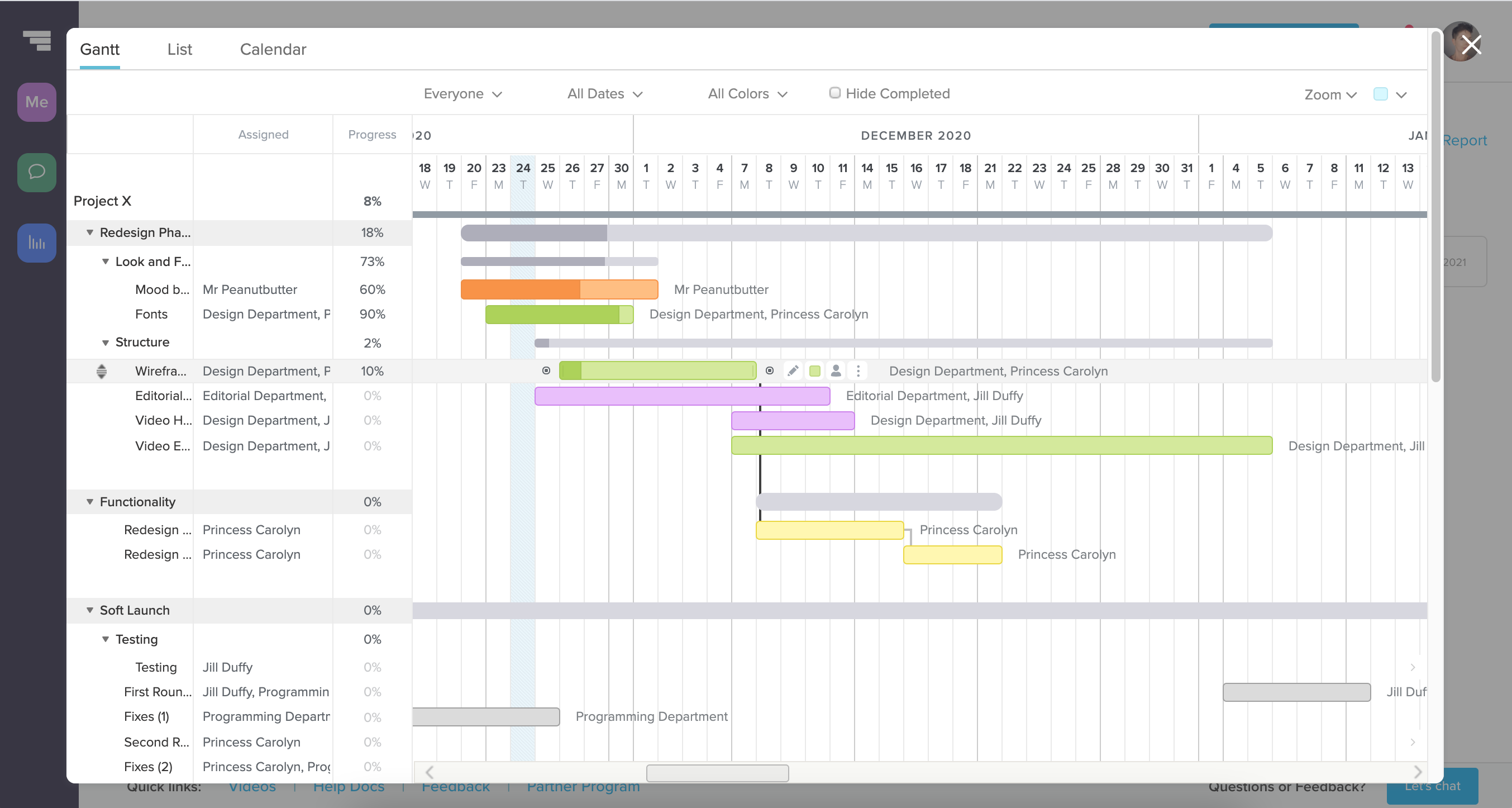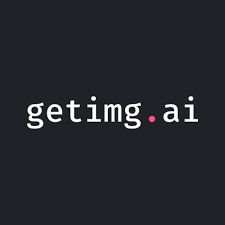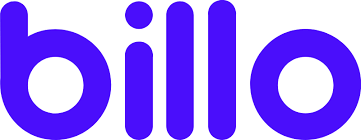TeamGantt Review

TeamGantt is the best project management tool for viewing and editing tasks on a Gantt chart. That is why companies like Amazon, NeFlix and Nike manage their projects with TeamGantt. You can easily plan, schedule, and manage projects with the free chart Creator, and you can also invite clients and teams to collaborate on your gantt chart or project.
One of the best parts of TeamGantt is that you can use it for free forever! You don`t even need a credit card to start using.

Although TeamGantt excels at Gantt charts, they are not the only option for viewing projects and work in the app. You can also view lists of tasks, a calendar view, and on a kanban-style board.
How Much Does TeamGantt Cost?
TeamGantt offers four service levels: Free, Standard Team, Advanced Team, and Enterprise. The prices of all these plans are in the middle when compared to the competitors. A free account is free forever but has limits. You can manage one job at a time with only three people, the whole job has a limit of 60 jobs. This plan comes with limited features.
For paid plans, TeamGantt uses a discount rate. Here, I’ve listed the monthly price, but you can also pay annually for a small discount. Pricing starts at $24.95 per month for one person (with unlimited visitors) for the standard membership plan. Each licensed member costs about $9.95 more per month. Premium memberships start at $29.95 per month for one person and add up to $14.95 per person per month. The website has a cost calculator on the TeamGantt site. For corporate plans, you should contact the company for a quote. One big difference between the Standard and Advanced Team plans is time tracking. With advanced team planning, all team members can track their time on any task using time or input. An early warning system lets you know if the project is at risk of not being completed on time. In addition, using advanced group planning, you can generate reports based on the time being monitored and make other decisions about the number of planned employee hours. The standard plan does not have any of these tools.

How Do TeamGantt’s Prices Compare?
Compared with other services, TeamGantt’s prices are somewhere in the middle. It’s difficult to evaluate costs in this category because project management services all have different ways of calculating their prices.
A ballpark figure for mid-tier services is anywhere from about $20–$40 per person per month. Mid-tier project management apps are good for mid-sized to large businesses and growing teams. Among the mid-tier options, you often have to see what special tools and services, if any, the app offers to differentiate itself from others.
Small businesses, however, don’t have to spend nearly as much for a good tool, with options falling into the range of $5–$12 per person per month. At the highest end, very large organizations managing hundreds of projects will likely end up paying $45 per person per month or more.
Getting Started With TeamGantt
Setting up TeamGantt is very easy. The site is self-explanatory, with sample content provided, helpful video tutorials, and general tips as you navigate through the application. While there are solid Gantt-based project management tools out there (LiquidPlanner comes to mind), setting them up, learning them, and getting started can take weeks. TeamGantt takes a few minutes. You can start a new project from scratch, work from a template, or upload a CSV file. After using TeamGantt a bit, you also see the option to customize your own project. During the process of creating a project, you choose the day of the week that your team considers the work day.
Then, invite partners to help you manage and complete your project. When you invite new members, you create an authorization level for each member. Advanced users can access assigned tasks and they can create new tasks for the group. A primary user can only access their own services. Guest users can only see one active task at a time with read-only permissions. You can also assign colors to team members, making your Gantt chart more visual.
In addition to adding people, TeamGantt lets you add resources, such as teams, so you can assign tasks to scheduling departments rather than selecting people. Can be color coded.
Going through the TeamGantt website, the ease with which anyone can figure out what to do is impressive. The app provides quick tutorials and tips, when you might need them. For example, if you are trying to find out how to create a dependency between projects, a link to a video tutorial (opens in a new window) on the topic appears in front of you. These suggestions do not apply either. Over time, we see less. Once your project is filled with tasks and deadlines, a table appears below the Gantt chart showing the number of tasks assigned each day to your various team members and resources. This chart helps project managers and team leaders look at bottlenecks and burnouts before they happen.

Features and Interface
Creating tasks and adding details to them, such as due dates and recipients, is easy. The interface supports drag and drop functionality and is responsive. The pleasing color combination and appropriate white space make the app easy on the eyes. It’s a bit intimidating, especially compared to LiquidPlanner, which looks like it’s heavy on buttons. In addition to creating a task group, you can create task groups, sub-groups (basically subtasks), and milestones. You can collapse a task to simplify the display of the Gantt chart when you need it. Gantt charts are your main view in TeamGantt, they are interactive and editable. You can edit due dates, details, dependencies and other task details from the Gantt view. It’s also easy to reassign tasks, add comments, track time spent on the task, and more. You can edit anything from the Gantt chart view. TeamGantt also has a nice Shake feature that fixes breakdowns in dependent tasks. For example, suppose you have a backup process and one of these unscheduled tasks. You can hold the highest function in the chain and shake your cursor. All subsequent tasks are automatically reordered in the correct order.
Time Tracking and Reports
TeamGantt has time tracking tools in its Advanced and Enterprise versions. Team members have two ways to track their time spent on each task. One is the in-app timer. Before the timer starts, you select your current job, which means it’s on your job calendar and ready to start based on the start date or job background. For example, if today is Thursday and you have a task that should start on Friday, you will not be able to start the schedule for it today. You run out of time when you work. It records minutes and hours. When you’re done, the saved time will be added to the selected activity. The second method is intervention. This type of input is not restricted at all, so you can put in the time you spend working even if it doesn’t work or the technology is limited at the time of starting. TeamGantt includes reports, but compared to some project management tools, these are more fun, but more useful in Advanced Team and Enterprise account levels where you can spread reports during work. You can create a custom report using three variables: people, tasks, and time. For example, you can expand the story of how many hours Carolyn worked this week. The balance sheet also has a basic view/report, which shows you how far behind your team is compared to where you think you are. Another report you can run is Project Health, which is designed for project managers or anyone in charge of operations. This is more of a dashboard view than a report, as it shows how close each project is to completion. It displays three statuses and the number of tasks for each: OK (on track to meet the deadline), Not Passed (behind schedule), and Passed (the deadline is not known).
There’s also a job report, which is basically a resource management tool. It shows how much work is assigned to a person or resource, such as a department or group. This report shows in the calendar view a color code to show each person or resource that has been uploaded. If you want a project management tool with more reporting features, LiquidPlanner is strong in that area. It offers many other reports and analysis, including summary reports (hours entered and hours remaining), historical changes, and day slips (aka Slip Reports).






